Idea by
Ida Križaj Leko
Call for ideas 2016
Future as a Tool – Flood as a Zero Condition
Future as a Tool – Flood as a Zero Condition

Conventional rehabilitation method of floods in May 2014 focused on 'restoring the facsimile' method, with the help of statistical and 'static' data that were used for measuring the extent of the actual disaster.
The architecture of emergency has been addressed by considering three different contexts: the locality/geography as such, the emergency (here flood) and time.
The context of locality/geography can be considered as a 'static' set of data, primarily because it is readily available, namely through the following parameters: the unit (house), the land plot and the settlement. This context is also what makes the floods of 2014 so specific. Traditional architecture, applicable to the parameter of buildings as the basic unit of the flooded area, has pushed into the background the cause of restoration, almost as an obliterated history. The aim behind introducing the other two contexts has been to positively reconstruct history through a 'possible future' into a 'desirable future'.
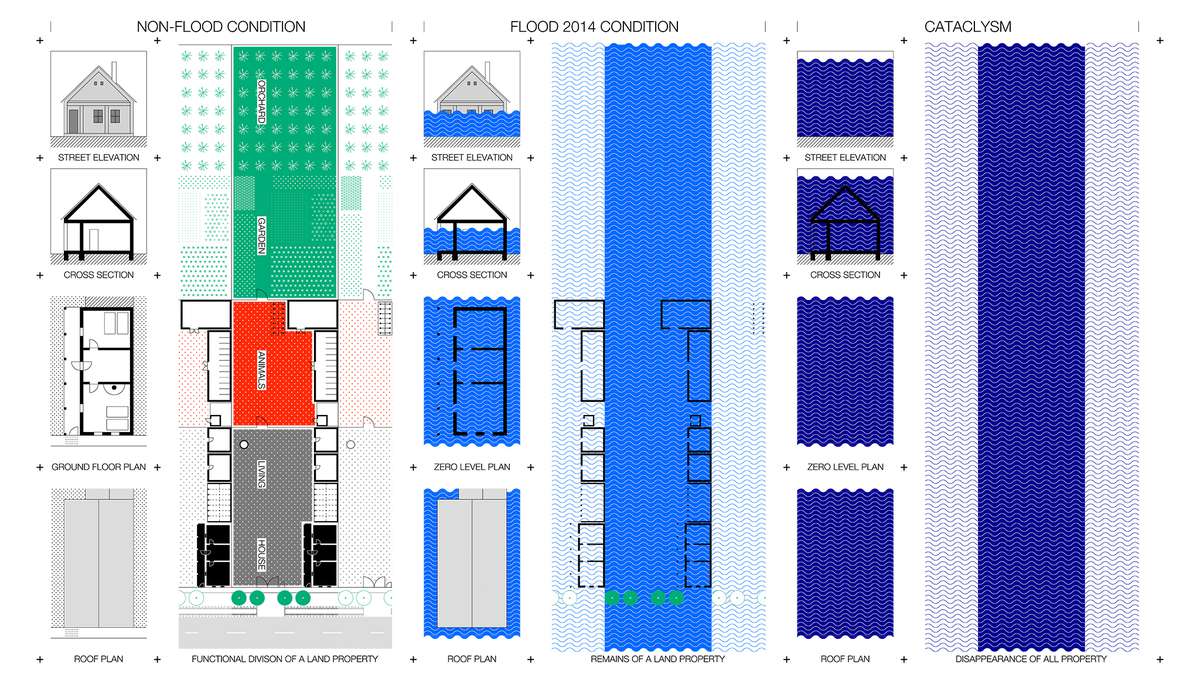
Traditionally built non-flood resistan house
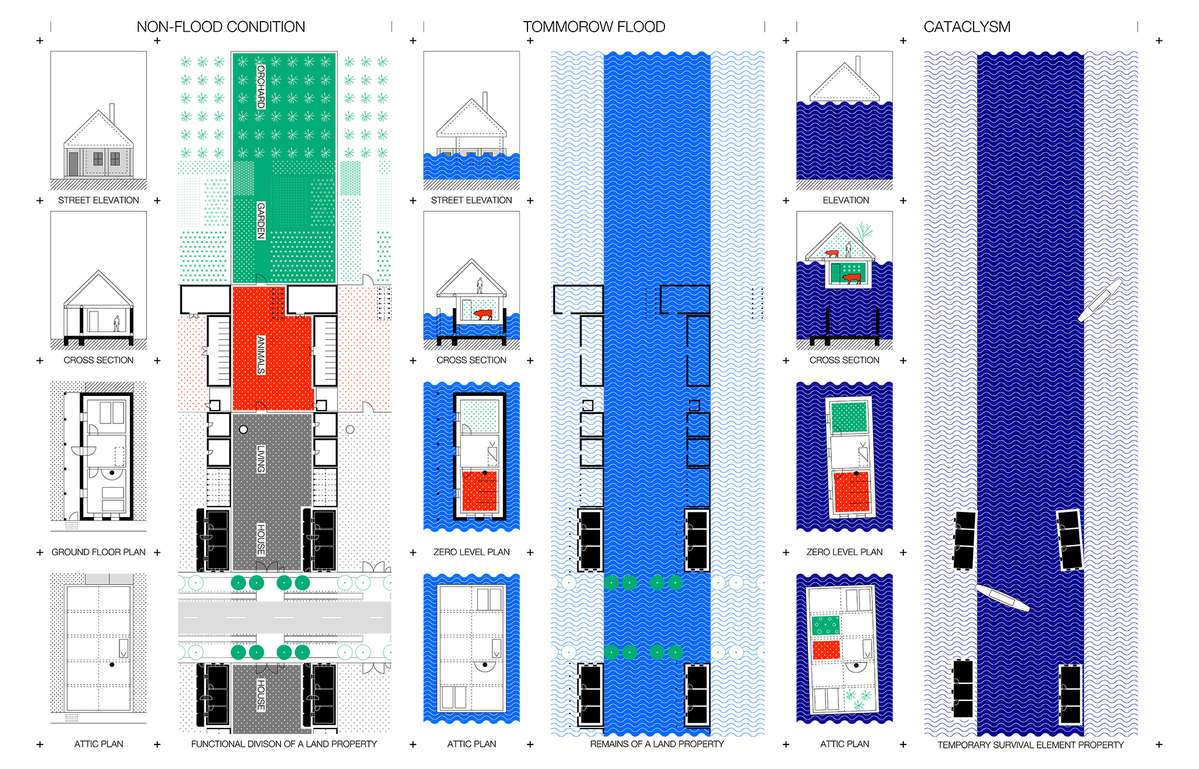
Half recovered traditionally built house after floods in May 2014 with flood resistant 'survival element'
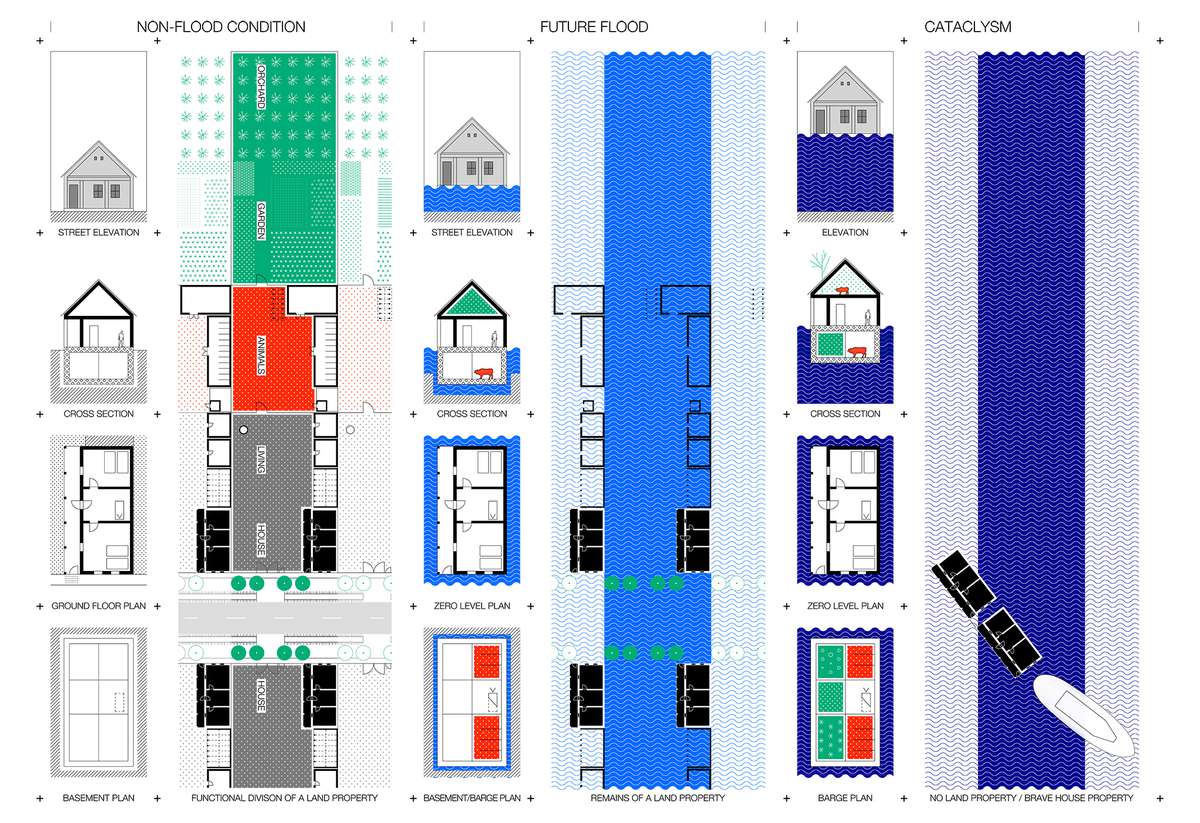
Amphibious house with traditional origin
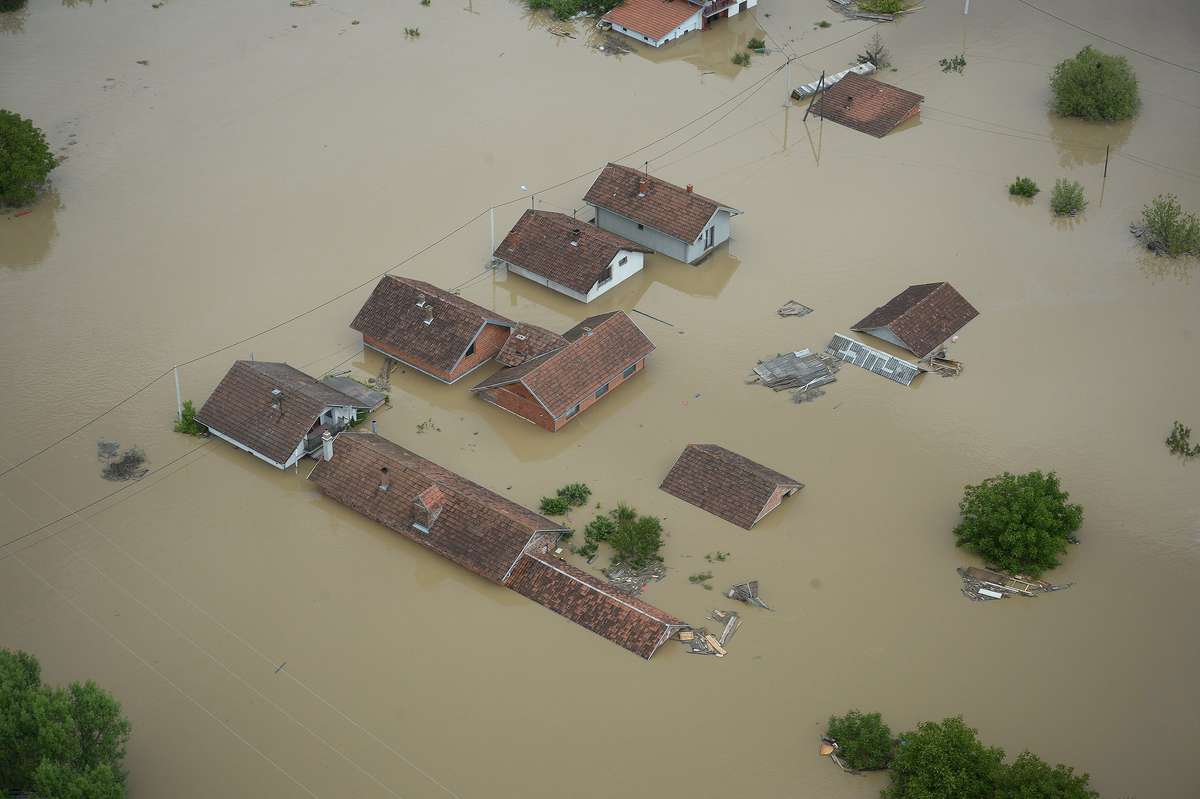
In areas like Gunja in Croatia, where traditional architecture and ways of living are heavily rooted, contemporary problems of our time such as consequences of climate changes can't be stricly restored only by technologically progressive solution nor by only replacing the future condition of the area and its inhabitants through a 'past condition'. This impossibility to have unambigiuous solution to a problem creates a chalange for our acting in the future. (photo via http://ifmsa.org/)
Future as a Tool – Flood as a Zero Condition
Future as a Tool – Flood as a Zero Condition

Conventional rehabilitation method of floods in May 2014 focused on 'restoring the facsimile' method, with the help of statistical and 'static' data that were used for measuring the extent of the actual disaster.
The architecture of emergency has been addressed by considering three different contexts: the locality/geography as such, the emergency (here flood) and time.
The context of locality/geography can be considered as a 'static' set of data, primarily because it is readily available, namely through the following parameters: the unit (house), the land plot and the settlement. This context is also what makes the floods of 2014 so specific. Traditional architecture, applicable to the parameter of buildings as the basic unit of the flooded area, has pushed into the background the cause of restoration, almost as an obliterated history. The aim behind introducing the other two contexts has been to positively reconstruct history through a 'possible future' into a 'desirable future'.

Traditionally built non-flood resistan house
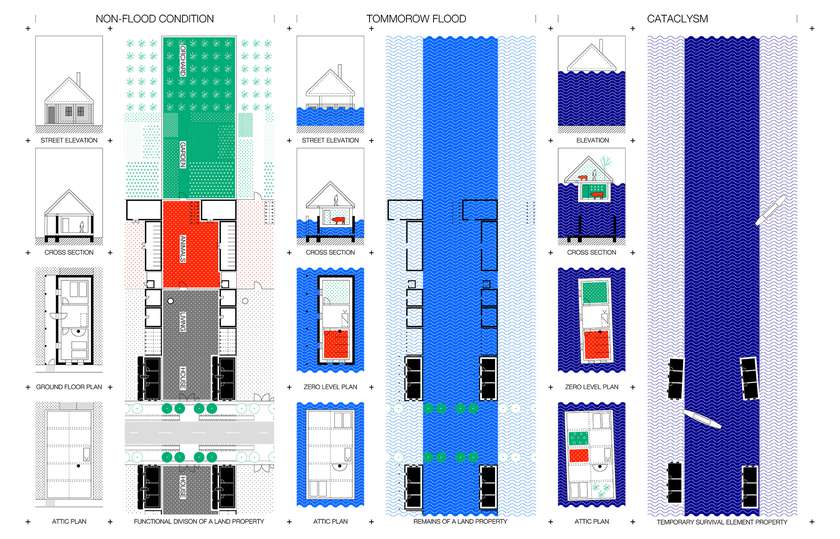
Half recovered traditionally built house after floods in May 2014 with flood resistant 'survival element'
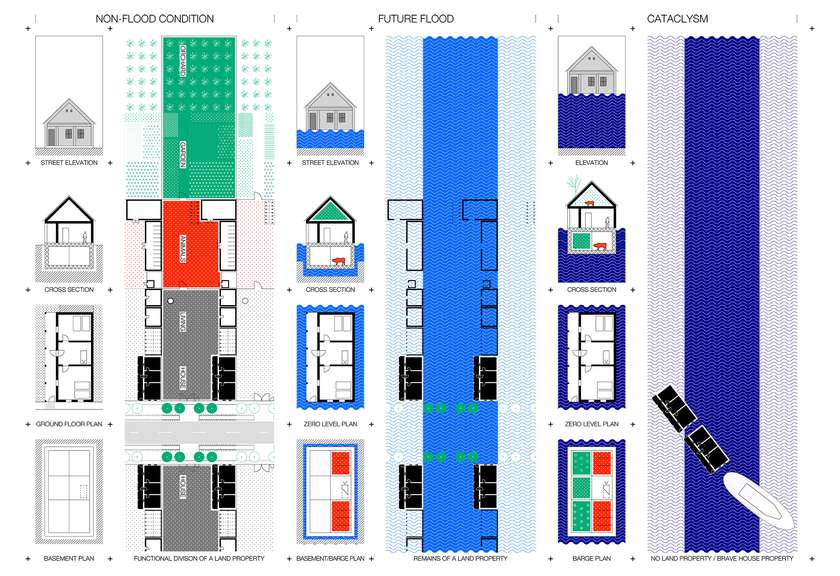
Amphibious house with traditional origin
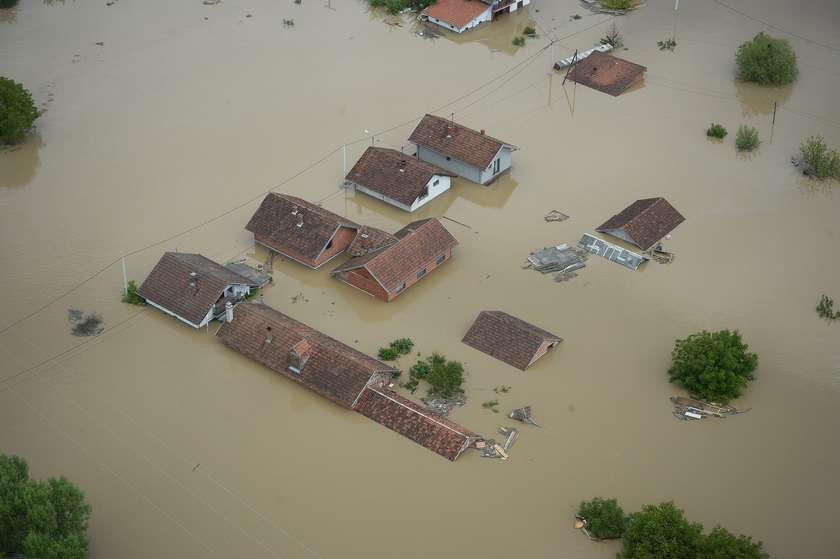
In areas like Gunja in Croatia, where traditional architecture and ways of living are heavily rooted, contemporary problems of our time such as consequences of climate changes can't be stricly restored only by technologically progressive solution nor by only replacing the future condition of the area and its inhabitants through a 'past condition'. This impossibility to have unambigiuous solution to a problem creates a chalange for our acting in the future. (photo via http://ifmsa.org/)